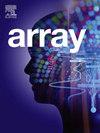Few-shot relation extraction approach for threat intelligence based on multi-level attention mechanism and hybrid prototypical network
IF 2.3
Q2 COMPUTER SCIENCE, THEORY & METHODS
引用次数: 0
Abstract
With the increasing complexity of cyberattacks, the frequency and severity of cybersecurity incidents have escalated dramatically. Cyber Threat Intelligence (CTI) relation extraction plays a critical role in cybersecurity event analysis by identifying semantic relationships between security-related entities, thereby converting unstructured information into structured data formats. Nevertheless, within the domain of CTI, labeled datasets are limited, and the process of manual labeling incurs substantial costs, rendering it impractical on a large scale. To address these challenges, we propose a novel few-shot relation extraction method for small-scale threat intelligence data, termed RETI-MA-HP, which is based on a multi-level attention mechanism and a hybrid prototypical network. By integrating these advanced techniques, the RETI-MA-HP model is capable of learning from limited data and rapidly generalize to new relation classification tasks. To enhance the representational capacity of feature vectors, RETI-MA-HP incorporates a self-training module to refine the BERT-based encoder. Meanwhile, to mitigate misclassification arising from syntactically similar sentences, RETI-MA-HP employ contrastive learning to strengthen the hybrid prototypical network. Furthermore, we constructed a dedicated CTI dataset. Extensive experiments demonstrate that RETI-MA-HP achieves excellent performance across multiple tasks, attaining a maximum relation extraction accuracy of 75.44%, which constitutes a 15.5% improvement over compared models. These results prove that the effectiveness of RETI-MA-HP for relation extraction within the CTI domain.
基于多级注意机制和混合原型网络的威胁情报少镜头关系提取方法
随着网络攻击的日益复杂,网络安全事件发生的频率和严重程度都急剧上升。CTI (Cyber Threat Intelligence)关系提取通过识别与安全相关的实体之间的语义关系,从而将非结构化信息转换为结构化数据格式,在网络安全事件分析中起着至关重要的作用。然而,在CTI领域,标记的数据集是有限的,手动标记的过程会产生大量的成本,使其在大规模上不切实际。为了解决这些问题,我们提出了一种基于多级注意机制和混合原型网络的小规模威胁情报数据的少量关联提取方法,称为rti - ma - hp。通过集成这些先进的技术,rti - ma - hp模型能够从有限的数据中学习,并迅速推广到新的关系分类任务。为了提高特征向量的表示能力,rti - ma - hp结合了一个自训练模块来改进基于bert的编码器。同时,为了减少由于句法相似句子而产生的误分类,rti - ma - hp采用对比学习对混合原型网络进行强化。此外,我们构建了一个专用的CTI数据集。大量的实验表明,rti - ma - hp在多任务中取得了优异的性能,最大关系提取精度达到75.44%,比比较模型提高了15.5%。这些结果证明了titi - ma - hp在CTI域内提取关系的有效性。
本文章由计算机程序翻译,如有差异,请以英文原文为准。
求助全文
约1分钟内获得全文
求助全文

 求助内容:
求助内容: 应助结果提醒方式:
应助结果提醒方式:


